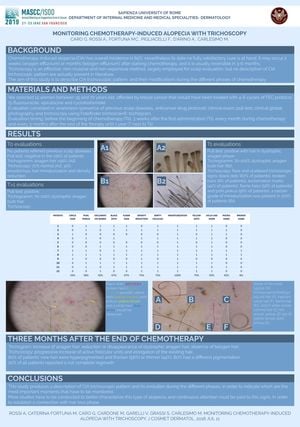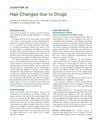Oral Targeted Therapy-Induced Cutaneous Toxicity: Life Experience of Patients with Advanced Lung Cancer in Taiwan
June 2019

TLDR More research is needed to understand chemotherapy-induced hair loss and its phases.
The study aimed to describe the trichoscopic patterns of chemotherapy-induced alopecia (CIA) and their changes during chemotherapy. It involved 12 women with breast cancer undergoing FEC protocol treatment. Trichoscopy was used to monitor scalp changes, revealing patterns such as black dots, broken hairs, and miniaturization in 100% of patients. Three months post-chemotherapy, there was an increase in anagen hair and active follicular units, with 80% of patients experiencing hyperpigmented new hair. The study concluded that more research is needed to better understand CIA and its phases, emphasizing the importance of monitoring trichoscopic signs.




